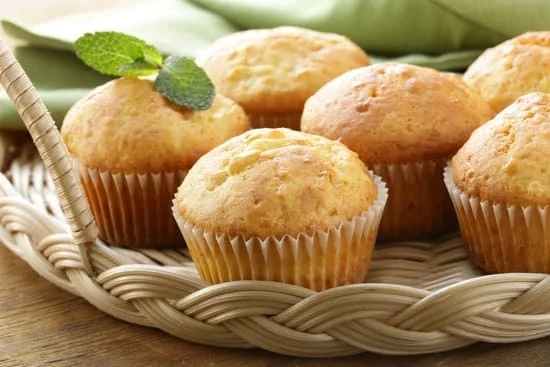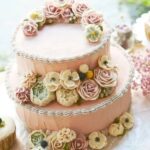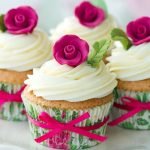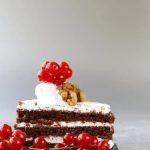Are you looking to enhance your cake decorating skills? Learning how to make icing for decorating cakes is a crucial skill that every baker, whether a professional or a home baker, should master. Icing plays a significant role in adding flavor, texture, and aesthetic appeal to cakes, making it an essential component of any decorated cake creation.
When it comes to decorating cakes, there are various types of icing options available, each offering unique characteristics and advantages. From the classic buttercream to the elegant royal icing, the versatile fondant to the rich cream cheese frosting, understanding the different types of icing can help you choose the best option for your specific cake design needs.
In this article, we will delve into the world of cake decorating with icing by exploring the common ingredients and equipment needed to create delicious and visually appealing icing. Whether you’re a beginner looking to develop your skills or an experienced baker seeking fresh inspiration, mastering the art of making icing is key to taking your cake creations to the next level.
Let’s dive in and discover how you can elevate your cake decorating game through the magic of homemade icing.
Types of Icing
When it comes to decorating cakes, choosing the right type of icing is crucial to achieving the desired look and taste. There are various options available, each with its own unique characteristics that cater to different preferences and styles. Here are some of the most popular types of icing used for cake decoration:
- Buttercream: Buttercream icing is a classic choice for decorating cakes due to its smooth texture and versatility. Made with butter, powdered sugar, and vanilla extract, buttercream can be easily colored and flavored to suit any cake design.
- Royal Icing: Royal icing is a hard-drying icing made from egg whites or meringue powder and powdered sugar. It is commonly used for intricate piping designs, such as on wedding cakes or gingerbread houses.
- Fondant: Fondant is a pliable sugar paste that can be rolled out and draped over cakes to create a smooth, polished finish. It is often used for creating elaborate cake designs and decorations.
- Cream Cheese Frosting: Cream cheese frosting is a tangy and creamy option that pairs well with moist cakes like red velvet or carrot cake. It is easy to spread and adds a delicious flavor dimension to any dessert.
Each type of icing has its own unique qualities and uses in cake decorating. Depending on the design you have in mind or the flavor profile you want to achieve, you can experiment with different types of icing to find the perfect fit for your creations.
As you explore the world of cake decoration, don’t be afraid to mix and match different icings for your creations. Whether you opt for a classic buttercream swirl on cupcakes or try your hand at intricate royal icing details on cookies, there are endless possibilities when it comes to using various icings in your baking projects.
With practice and creativity, you can master the art of using different types of icing to elevate your cake decorating skills and wow your friends and family with stunning confectionery creations.
Ingredients
When it comes to making delicious icing for decorating cakes, having the right ingredients on hand is essential. While there are various types of icing options available, the most common ingredients used in making icing include powdered sugar, butter, vanilla extract, milk, and food coloring. These basic ingredients form the foundation for creating a smooth and flavorful icing that will take your cake decorating skills to the next level.
Powdered Sugar
Powdered sugar, also known as confectioners’ sugar or icing sugar, is a key component of any icing recipe. Its fine texture helps to create a smooth and creamy consistency in the icing. When mixed with other ingredients like butter or cream cheese, powdered sugar adds sweetness and structure to the icing, helping it hold its shape when piped onto a cake.
Butter
Butter is another crucial ingredient in many icing recipes, especially for rich and creamy buttercream frosting. Unsalted butter is typically preferred for making icing to allow for better control over the saltiness of the final product. Softened butter can be creamed together with powdered sugar to create a fluffy and luxurious frosting that pairs well with various cake flavors.
Vanilla Extract
Vanilla extract is often added to give icing a hint of flavor and enhance its overall taste. Whether you’re making classic vanilla buttercream or experimenting with different flavor variations, a touch of vanilla extract can elevate the profile of your icing. Be sure to use pure vanilla extract for the best results in terms of both flavor and aroma.
By stocking up on these common ingredients and following a trusted recipe, you can easily make delicious icing for decorating cakes at home. Experimenting with different flavor combinations and techniques will allow you to customize your creations and impress your friends and family with beautifully decorated cakes that taste as good as they look. Explore different options and have fun getting creative in the kitchen.
Equipment
When it comes to making icing for decorating cakes, having the right equipment is crucial to achieving the perfect consistency and texture. Here are some essential tools that every baker should have in their kitchen to create beautiful and delicious cakes:
- Stand Mixer: A stand mixer is a versatile tool that makes mixing icing ingredients together a breeze. It ensures a smooth and creamy texture, especially when making buttercream icing.
- Spatula: A good quality spatula is essential for scraping down the sides of the bowl while mixing the icing. It also helps in spreading and smoothing out the icing on the cake surface.
- Piping Bags: Piping bags are indispensable for creating intricate designs and patterns with your icing. They come in various sizes and shapes to help you achieve different decorating techniques.
- Decorating Tips: Investing in a set of decorating tips allows you to create a wide range of designs, from simple borders to elaborate flowers. Different tips can help you achieve different textures and patterns on your cake.
Having these tools at your disposal will not only make the process of making icing easier but also elevate your cake decorating skills to a professional level. Experimenting with different equipment and techniques will allow you to unleash your creativity and create stunning cakes for any occasion.
Remember, while having the right equipment is important, practice and patience are key when it comes to mastering the art of cake decorating. So gather your tools, follow our step-by-step instructions for making icing, and get ready to impress everyone with your beautifully decorated cakes.
Step-by-Step Instructions
Gathering Ingredients and Equipment
To start making buttercream icing from scratch, you will need to gather all the necessary ingredients and equipment. The key ingredients typically include powdered sugar, unsalted butter (at room temperature), vanilla extract, and a pinch of salt. Additionally, you may want to have food coloring on hand if you plan to customize the color of your icing.
As for equipment, a stand mixer with a paddle attachment is highly recommended for achieving a smooth and creamy consistency. You will also need a spatula for scraping down the sides of the mixing bowl.
Mixing Techniques
Once you have all your ingredients and equipment ready, it’s time to start making the buttercream icing. Begin by creaming the softened butter in the stand mixer on medium speed until it is smooth and pale in color. Gradually add in the powdered sugar, a little at a time, while continuing to mix on low speed.
Be sure to scrape down the sides of the bowl occasionally to ensure all ingredients are well incorporated. Once all the powdered sugar is added, increase the mixer speed to medium-high and beat for another 2-3 minutes until the icing is light and fluffy.
Achieving Perfect Consistency
To achieve the perfect consistency for your buttercream icing, pay close attention to its texture as you mix. If the icing appears too thick or stiff, you can add small amounts of milk or heavy cream, one tablespoon at a time, until you reach your desired consistency. On the other hand, if the icing seems too runny or loose, simply add more powdered sugar gradually until it thickens up.
Remember that achieving the right consistency is crucial for piping decorations onto cakes effectively. Once your buttercream icing reaches the ideal texture, it’s ready to be used in decorating your delicious homemade cakes.
Tips for Decorating
Decorating cakes with icing is not only about making them visually appealing but also adding your personal touch to your baked creations. Whether you are a beginner or experienced baker, mastering the art of cake decorating can take your baking skills to the next level. In this section, we will share expert tips and tricks on how to decorate cakes with icing like a pro.
One essential tip for decorating cakes with icing is to practice different piping techniques. Piping bags and decorating tips come in various shapes and sizes, allowing you to create intricate designs on your cakes. Experiment with different nozzle tips to create rosettes, swirls, shells, or even intricate lace patterns. Practice on parchment paper before piping directly onto your cake to perfect your technique.
Another exciting way to elevate your cake decoration skills is by using color gradients in your icing. To achieve a color gradient effect, divide your icing into separate bowls and gradually add more food coloring to each bowl to create varying shades of the same color. Then, use a spatula or piping bag with multiple colors to create beautiful ombré effects on your cake layers. Remember to blend the colors seamlessly for a stunning finish.
In addition to piping techniques and color gradients, adding edible decorations can further enhance the visual appeal of your cakes. Edible decorations such as sprinkles, edible pearls, chocolate shavings, fresh fruits, or edible flowers can add texture and dimension to your cake designs.
Consider incorporating themed decorations for special occasions or holidays for a personalized touch that will impress your guests. Experiment with different combinations of textures and colors to create eye-catching cake masterpieces that taste as good as they look.
Troubleshooting
When it comes to making icing for decorating cakes, it is not uncommon to encounter issues with the consistency of the icing. One common problem that many bakers face is icing that is too runny. This can happen if too much liquid, such as milk or cream, is added to the mixture.
To fix this issue, you can gradually add more powdered sugar until the icing reaches the desired thickness. Another solution is to refrigerate the icing for a short period to help it firm up.
On the other hand, if your icing turns out too thick, making it challenging to pipe or spread on your cake smoothly, there are simple remedies for this problem as well. Adding a small amount of liquid, such as milk or water, and mixing it thoroughly can help thin out the icing. Additionally, incorporating a bit of room-temperature butter into the mixture can help soften and loosen the consistency of the icing.
It’s crucial to remember that achieving the perfect consistency for your icing may require some trial and error. Adjusting the ingredients gradually and testing along the way will help you reach the ideal texture for decorating your cake. By following these troubleshooting tips, you can overcome common issues with icing and ensure that your cakes look not only beautiful but also delicious.
| Common Issue | Solution |
|---|---|
| Icing Too Runny | Add more powdered sugar or refrigerate briefly |
| Icing Too Thick | Add a small amount of liquid or room-temperature butter |
Flavors and Variations
When it comes to decorating cakes, the flavor of the icing can make a huge difference in the overall taste and presentation of the final product. While classic buttercream icing is always a popular choice, there are countless flavor variations that you can explore to add a unique touch to your cakes. Chocolate, lemon, and strawberry are just a few examples of delicious flavors that can take your cake from ordinary to extraordinary.
For chocolate lovers, adding cocoa powder or melted chocolate to your basic buttercream recipe can create a rich and decadent chocolate icing that pairs perfectly with chocolate cake layers. For a refreshing twist, incorporating lemon zest or lemon juice into your icing can provide a zesty and citrusy flavor that complements light and fluffy lemon cakes beautifully.
And for those who love fruity flavors, blending pureed strawberries or strawberry extract into your icing can infuse your cakes with a sweet and summery taste.
Customizing icing recipes to suit different cake flavors and themes is all about experimenting and finding the perfect balance of flavors. Consider pairing complimentary flavors like vanilla icing with red velvet cake or coconut icing with pineapple upside-down cake to create harmonious flavor combinations. Don’t be afraid to get creative and think outside the box when it comes to choosing flavors for your icing – the possibilities are endless.
Conclusion
In conclusion, mastering the art of making icing for decorating cakes is a crucial skill for any baker or home baker looking to elevate their cake decorating game. Whether you prefer the smooth and creamy texture of buttercream, the delicate detail of royal icing, the versatility of fondant, or the tangy sweetness of cream cheese frosting, there is a wide array of options to choose from when it comes to icing your cakes.
By understanding the different types of icing, familiarizing yourself with essential ingredients and equipment, following step-by-step instructions, and incorporating expert tips for decorating, you can create stunning masterpieces that not only look beautiful but taste delicious as well.
Experimentation is key when it comes to exploring different icing techniques. From mastering various piping designs to playing with color gradients and adding edible decorations, there are endless possibilities to unleash your creativity and personalize your cakes.
Remember that practice makes perfect, so don’t be afraid to try new flavor variations or customize icing recipes to suit different cake flavors and themes. The more you experiment and refine your skills in making and decorating cakes with icing, the more confident and proficient you will become in creating show-stopping desserts that will impress friends and family alike.
In essence, learning how to make icing for decorating cakes opens up a world of creative possibilities for bakers at any skill level. Whether you’re a beginner looking to hone your skills or an experienced baker seeking new challenges, mastering different icing techniques can take your cake decorating abilities to the next level.
So roll up those sleeves, gather your ingredients and equipment, follow the step-by-step instructions provided in this article on how to make buttercream icing from scratch, and let your imagination run wild as you decorate beautiful cakes that will leave a lasting impression on all who see (and taste) them. Happy baking.
Frequently Asked Questions
What Kind of Icing Is Best for Decorating Cakes?
The best icing for decorating cakes depends on the desired outcome and taste preferences. Buttercream is popular for its creamy texture and ability to hold intricate decorations. Royal icing is great for detailed designs, while fondant provides a smooth finish.
How to Make the Perfect Icing for a Cake?
Making the perfect icing for a cake involves careful preparation and attention to detail. Start by sifting powdered sugar to avoid lumps, then gradually add liquid (such as milk or water) until reaching the desired consistency. Flavorings like vanilla extract can enhance the taste.
How Do You Mix Icing Sugar for Decorations?
Mixing icing sugar for decorations requires precision and patience. Start by sifting the sugar to remove any clumps, then gradually add small amounts of liquid while stirring constantly. Adjust the consistency as needed by adding more sugar or liquid until achieving the desired thickness.

Welcome to our cake decorating blog! My name is Destiny Flores, and I am the proud owner of a cake decorating business named Cake Karma. Our mission is to provide delicious, beautiful cakes for all occasions. We specialize in creating custom cakes that are tailored specifically to each customer’s individual needs and tastes.





